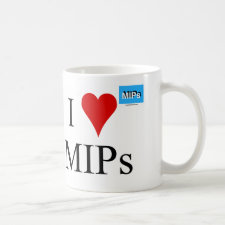
Authors: Lim KF, Hall AJ, Lettieri S, Holdsworth CI
Article Title: Assessment of the imprinting efficiency of an imide with a "stoichiometric" pyridine-based functional monomer in precipitation polymerisation.
Publication date: 2018
Journal: Journal of Molecular Recognition
Volume: 31
Issue: (3)
Page numbers: ArticleNoe2655.
DOI: 10.1002/jmr.2655
Alternative URL: https://www.researchgate.net/publication/318226029_Assessment_of_the_Imprinting_Efficiency_of_an_Imide_with_a_'Stoichiometric'_Pyridine-based_Functional_Monomer_in_Precipitation_Polymerization
Abstract: The efficiency of the stoichiometric non-covalent imprinting of the imide 2,3,5-tri-O-acetyluridine (TAU) with 2,6-bis(acrylamido)pyridine (BAAPy) as functional monomer due to their strong donor-acceptor-donor/acceptor-donor-acceptor (DAD/ADA) hydrogen bond array interaction has been evaluated by bulk imprinting. This study is the first to investigate the imprinting and template rebinding efficiencies of the TAU/BAAPy molecularly imprinted polymeric (MIP) system prepared by precipitation polymerisation. We found that the stoichiometric 1:1 T:FM ratio has not been maintained in precipitation polymerisation and an optimal TAU:BAAPy ratio of 1:2.5 was obtained in acetonitrile without agitation affording an affinity constant (1.7 x 10^4 M-1) and a binding capacity (3.69 μmol/g) higher than its bulk counterpart. Molecular modelling, NMR studies, and selectivity assays against analogues uridine and 2,3,5-tri-O-acetyl cytidine (TAC) indicate that, aside from the DAD/ADA hydrogen bond interaction, BAAPy also interacts with the acetyl groups of TAU. Template incorporation and rebinding in precipitation MIPs are favoured by a moderate initiator concentration, ie, initiator:total monomer (I:TM) ratio of 1:131, while low I:TM ratio (ie, 1:200) drastically reduced template incorporation and binding capacity. Vigorous agitation by stirring showed higher template incorporation but significantly lower template rebinding compared to that prepared without agitation. While the imprinting efficiencies for the best performing bulk and precipitation TAU MIPs generated in this study were moderate, 41% and 60%, respectively, their rebinding capacities were only between 3 and 4% of the incorporated template. We also present quantitative nuclear magnetic resonance spectroscopy as an efficient method for MIP characterisation
Template and target information: 2,3,5-tri-O-acetyluridine, TAU
Author keywords: 2,6-bis(acrylamido)pyridine, donor-acceptor-donor hydrogen bond array, Molecularly imprinted polymers, precipitation imprinting, precipitation polymerisation, quantitative NMR



Join the Society for Molecular Imprinting

New items RSS feed
Sign-up for e-mail updates:
Choose between receiving an occasional newsletter or more frequent e-mail alerts.
Click here to go to the sign-up page.
Is your name elemental or peptidic? Enter your name and find out by clicking either of the buttons below!
Other products you may like:
 MIPdatabase
MIPdatabase









